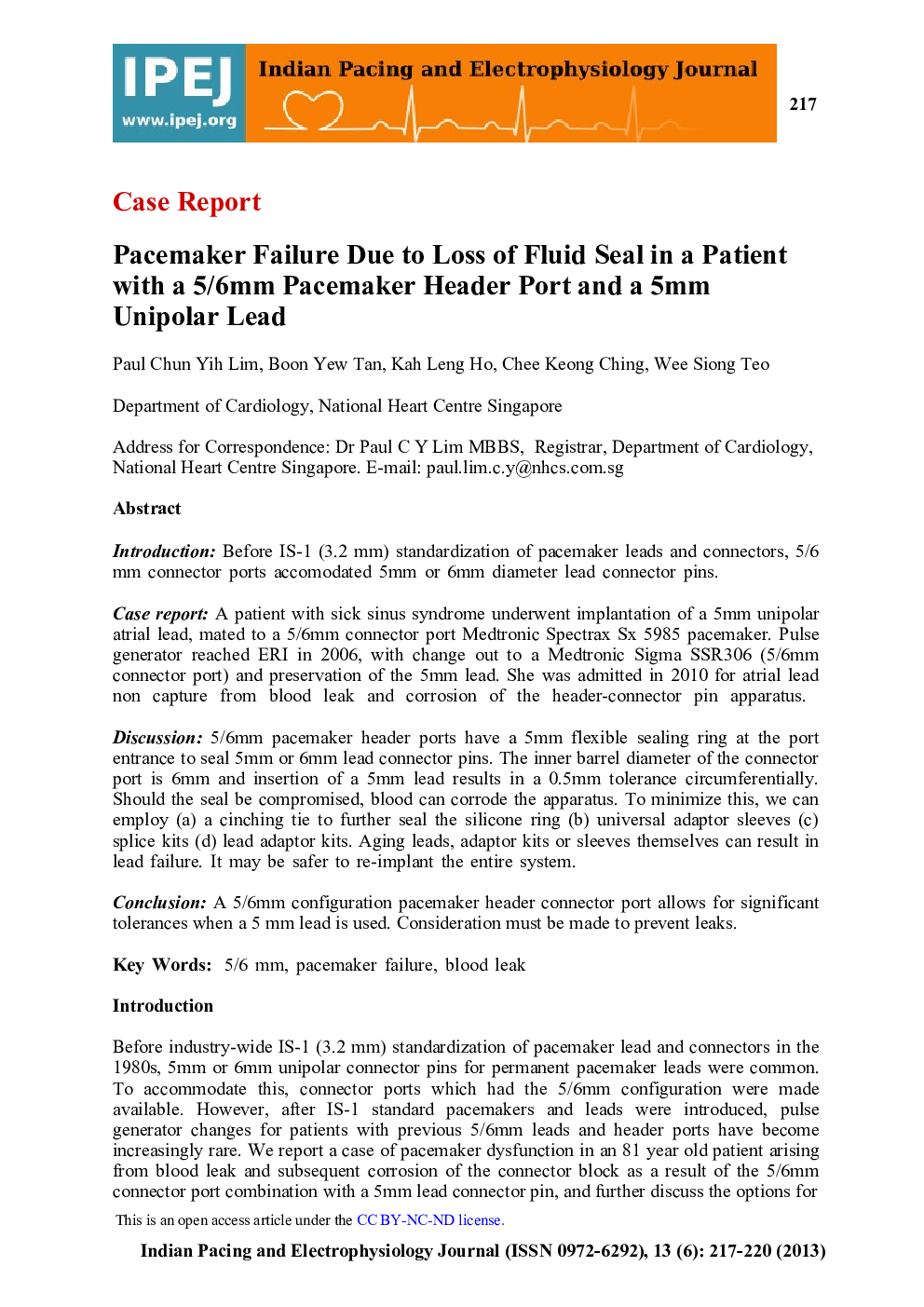| Article ID | Journal | Published Year | Pages | File Type |
|---|---|---|---|---|
| 2928516 | Indian Pacing and Electrophysiology Journal | 2013 | 4 Pages |
IntroductionBefore IS-1 (3.2 mm) standardization of pacemaker leads and connectors, 5/6 mm connector ports accomodated 5 mm or 6 mm diameter lead connector pins.Case reportA patient with sick sinus syndrome underwent implantation of a 5 mm unipolar atrial lead, mated to a 5/6 mm connector port Medtronic Spectrax Sx 5985 pacemaker. Pulse generator reached ERI in 2006, with change out to a Medtronic Sigma SSR306 (5/6 mm connector port) and preservation of the 5 mm lead. She was admitted in 2010 for atrial lead non capture from blood leak and corrosion of the header-connector pin apparatus.Discussion5/6 mm pacemaker header ports have a 5 mm flexible sealing ring at the port entrance to seal 5 mm or 6 mm lead connector pins. The inner barrel diameter of the connector port is 6 mm and insertion of a 5 mm lead results in a 0.5 mm tolerance circumferentially. Should the seal be compromised, blood can corrode the apparatus. To minimize this, we can employ (a) a cinching tie to further seal the silicone ring (b) universal adaptor sleeves (c) splice kits (d) lead adaptor kits. Aging leads, adaptor kits or sleeves themselves can result in lead failure. It may be safer to re-implant the entire system.ConclusionA 5/6 mm configuration pacemaker header connector port allows for significant tolerances when a 5 mm lead is used. Consideration must be made to prevent leaks.
